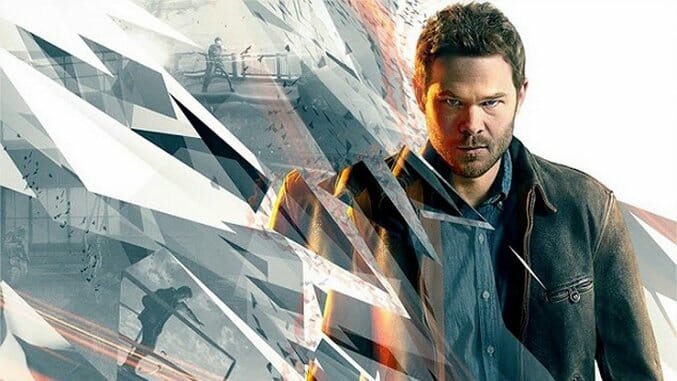A Remedy for Clichés: Sam Lake on Quantum Break

Quantum Break, the newest game from Finnish studio Remedy Entertainment, is a science fiction story that centers on what I personally find to be the most terrifying science fiction concept: time travel. The protagonist of the game is Jack Joyce (played with hyperreal facial motion capture by former Animorph Shawn Ashmore), and the key mechanic is centered around Joyce’s manipulation of broken time. It’s the stuff of superhero stories, and from the marketing materials and prerelease buzz it seems like it all came together as an easy, coherent whole. There’s an effortlessness in the trailers and footage that really makes Quantum Break look impressively mechanically and narratively integrated from top to bottom.
This was something I was really keen to know about when I spoke to Remedy’s Creative Director Sam Lake about the game. In a stumbling way, I asked him about how the various wide pop cultural references that Remedy is known for (like the Stephen King meets Twin Peaks of Alan Wake) come together. Is it a big narrative timeline? Or maybe a giant vision board? It seemed to me that Remedy’s games, with their very specific flavors, emerged as complete units from the minds of the designers and developers.
Lake’s response was far more interesting than that. Rather than the story driving the technological developments being implemented in the game, the tech side of things have sometimes pushed development at Remedy. “In Alan Wake we had dynamic shadows, day and night, and dynamic lighting up and running when we were concepting,” he explained, “so before we locked in on the actual Alan Wake idea we were exploring different story ideas that would have themes of light and darkness in there.” The same iterative creative process applies to their newest release:
“In a similar way in Quantum Break we, for example, early on had this kind of state recording technology and looking at it gave me ideas of broken timelines. You could take physics objects that would explode and you could record that and rewind the timeline, and from there came the idea that in stutters if time is broken then we could have these individual components kind of trapped there.”
While many game studios have their own particular internally developed tools and processes that feed into a cycle of narrative and technical development, Remedy’s unique process has tended toward producing things that are further from the mainstream in both narrative tone and mechanical innovation. Whether you love them or hate them, it is undeniable that there is something very particular about Max Payne, Alan Wake and the unique studio voice that produced those games.